Complete Solutions to NCERT TEXTBOOK QUESTIONS WITH ANSWER HINT of chapter KIRCHHOFF'S LAWS AND ELECTRICAL MEASUREMENT of Class 12 book with complete answers and questions
| Class 12 | PHYSICS |
| Chapter | KIRCHHOFF'S LAWS AND ELECTRICAL MEASUREMENT |
| CHHAYA PRAKASHINI | NCERT TEXTBOOK QUESTIONS WITH ANSWER HINT |
| Number Of Questions | 10 |
| Academic Year | 2023-24 |
Determine the current in each branch of the network shown in Fig
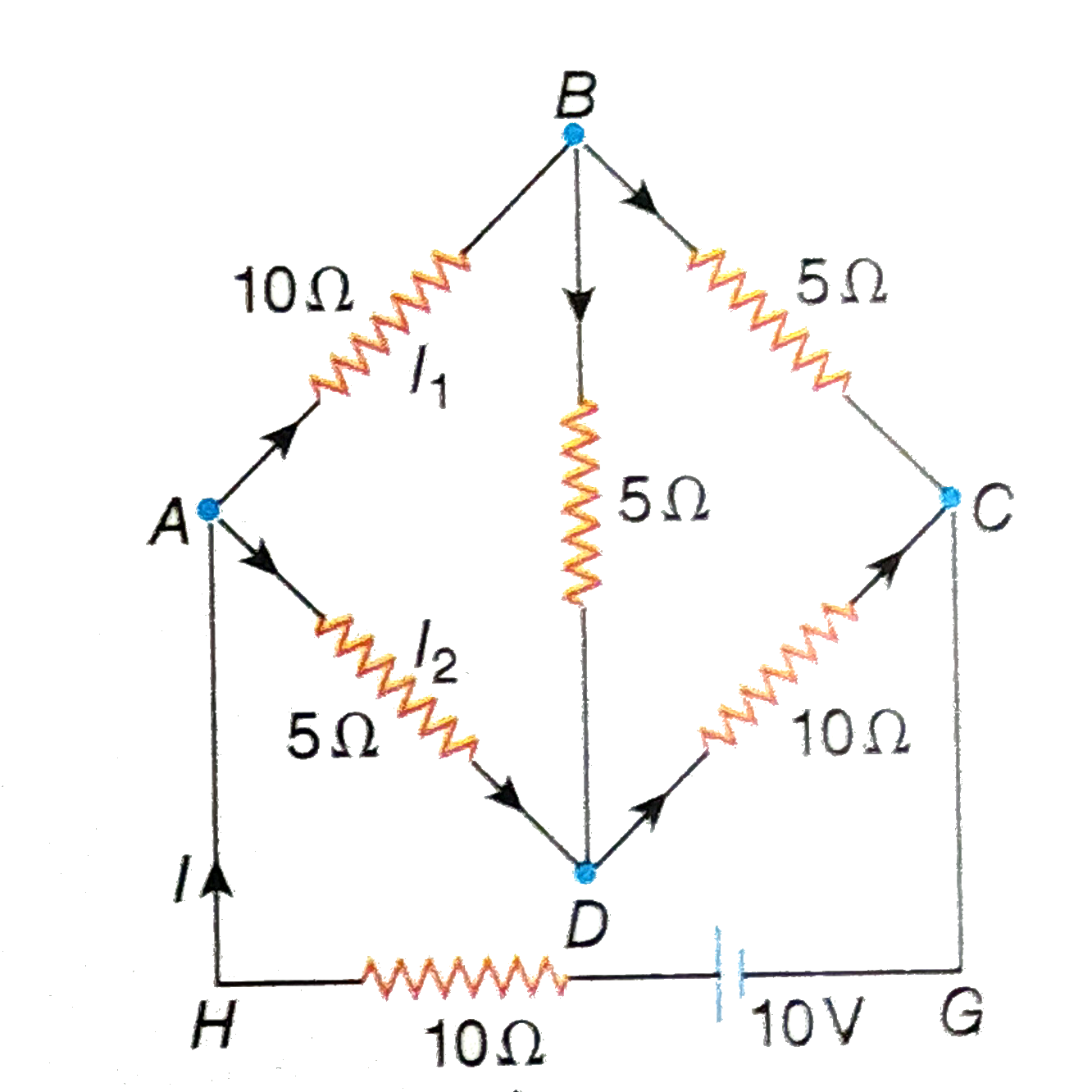 View Solution
View SolutionShows a potentiometer with a cell of 2.0 V and internal resiatance `0.40Omega` maintaining a potential drop across the reistor wire AB . A standard cell which maintain a constant emf of 1.02 V (for very moderate currents up to a few mA ) gives a balance point at 67.3 cm length of the wire . To ensure very low currents from the standard cell , a very high resistance of `600kOmega` is put in series with it , whcich is horrted close t the balance point . The standard cell is then replaced by a cell of unknown emf e and the balance ponit found similarly , turns out to to be at 82.3 cm length of the wire .
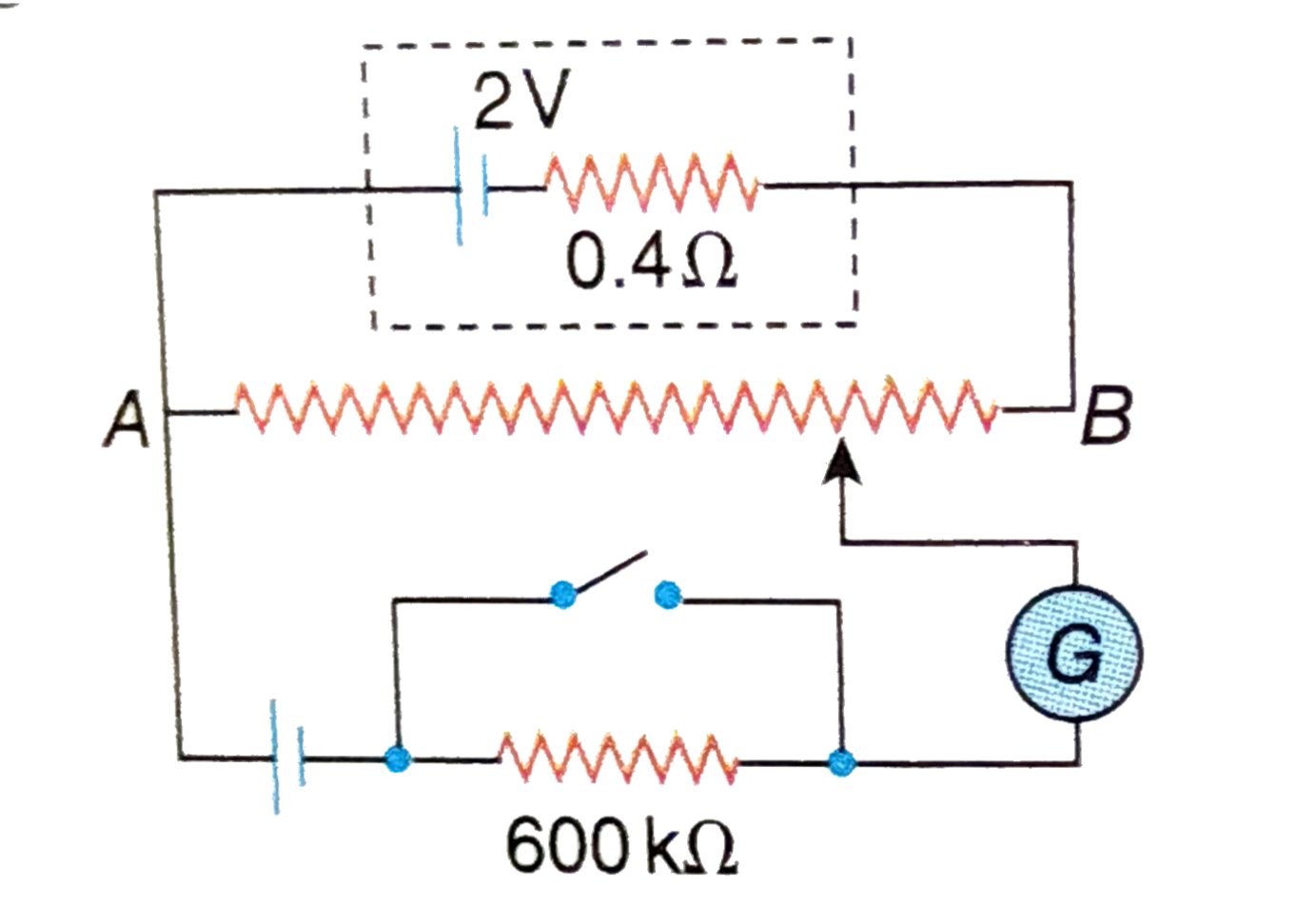
What is the value of e ?View SolutionShows a potentiometer with a cell of 2.0 V and internal resiatance `0.40Omega` maintaining a potential drop across the reistor wire AB . A standard cell which maintain a constant emf of 1.02 V (for very moderate currents up to a few mA ) gives a balance point at 67.3 cm length of the wire . To ensure very low currents from the standard cell , a very high resistance of `600kOmega` is put in series with it , whcich is horrted close t the balance point . The standard cell is then replaced by a cell of unknown emf e and the balance ponit found similarly , turns out to to be at 82.3 cm length of the wire .

What purpose does the high resistance of `600kOmega` serve ?View SolutionShows a potentiometer with a cell of 2.0 V and internal resiatance `0.40Omega` maintaining a potential drop across the reistor wire AB . A standard cell which maintain a constant emf of 1.02 V (for very moderate currents up to a few mA ) gives a balance point at 67.3 cm length of the wire . To ensure very low currents from the standard cell , a very high resistance of `600kOmega` is put in series with it , whcich is horrted close t the balance point . The standard cell is then replaced by a cell of unknown emf e and the balance ponit found similarly , turns out to to be at 82.3 cm length of the wire .
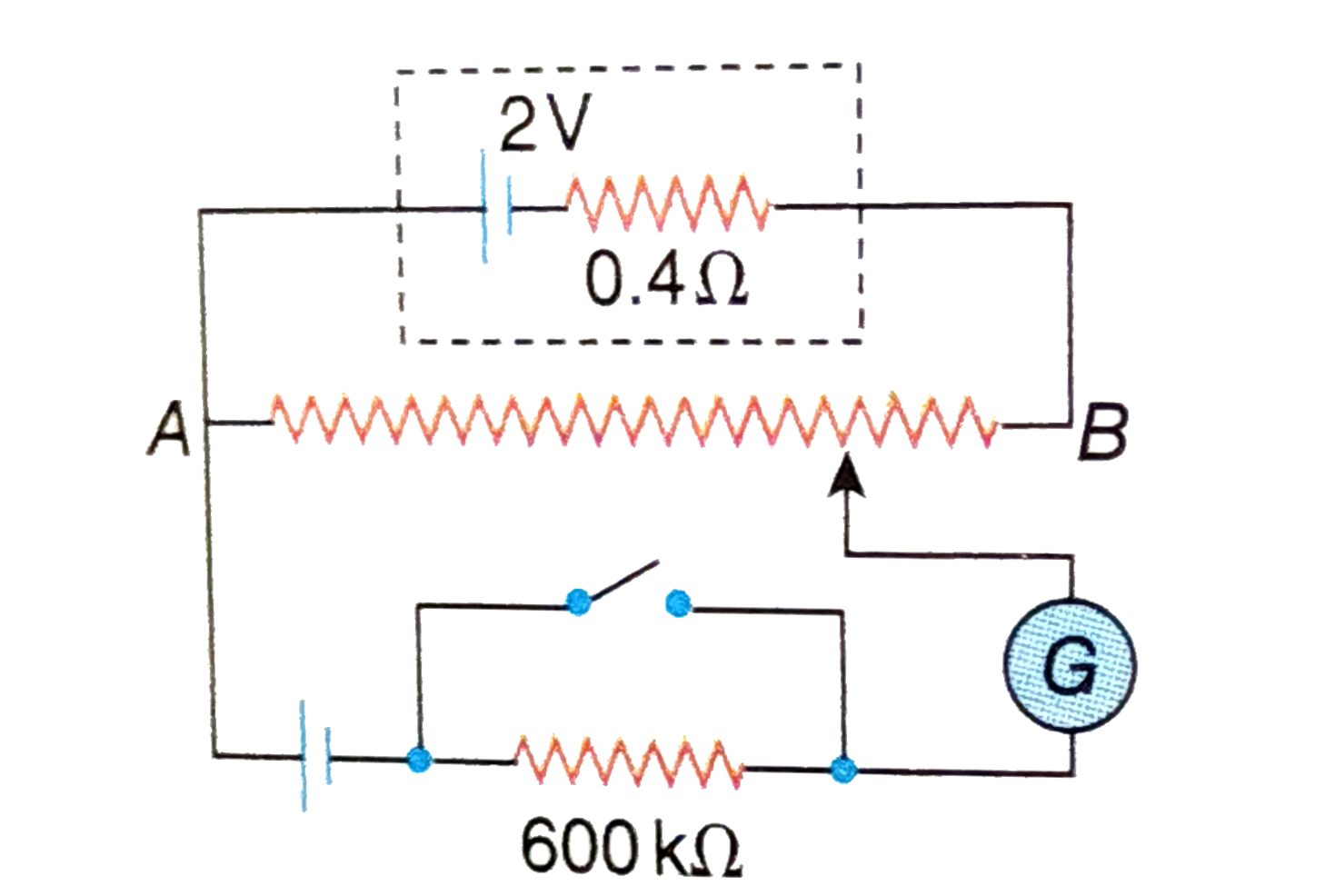
Is the balance point affected by this high resistance ?View SolutionShows a potentiometer with a cell of 2.0 V and internal resiatance `0.40Omega` maintaining a potential drop across the reistor wire AB . A standard cell which maintain a constant emf of 1.02 V (for very moderate currents up to a few mA ) gives a balance point at 67.3 cm length of the wire . To ensure very low currents from the standard cell , a very high resistance of `600kOmega` is put in series with it , whcich is horrted close t the balance point . The standard cell is then replaced by a cell of unknown emf e and the balance ponit found similarly , turns out to to be at 82.3 cm length of the wire .
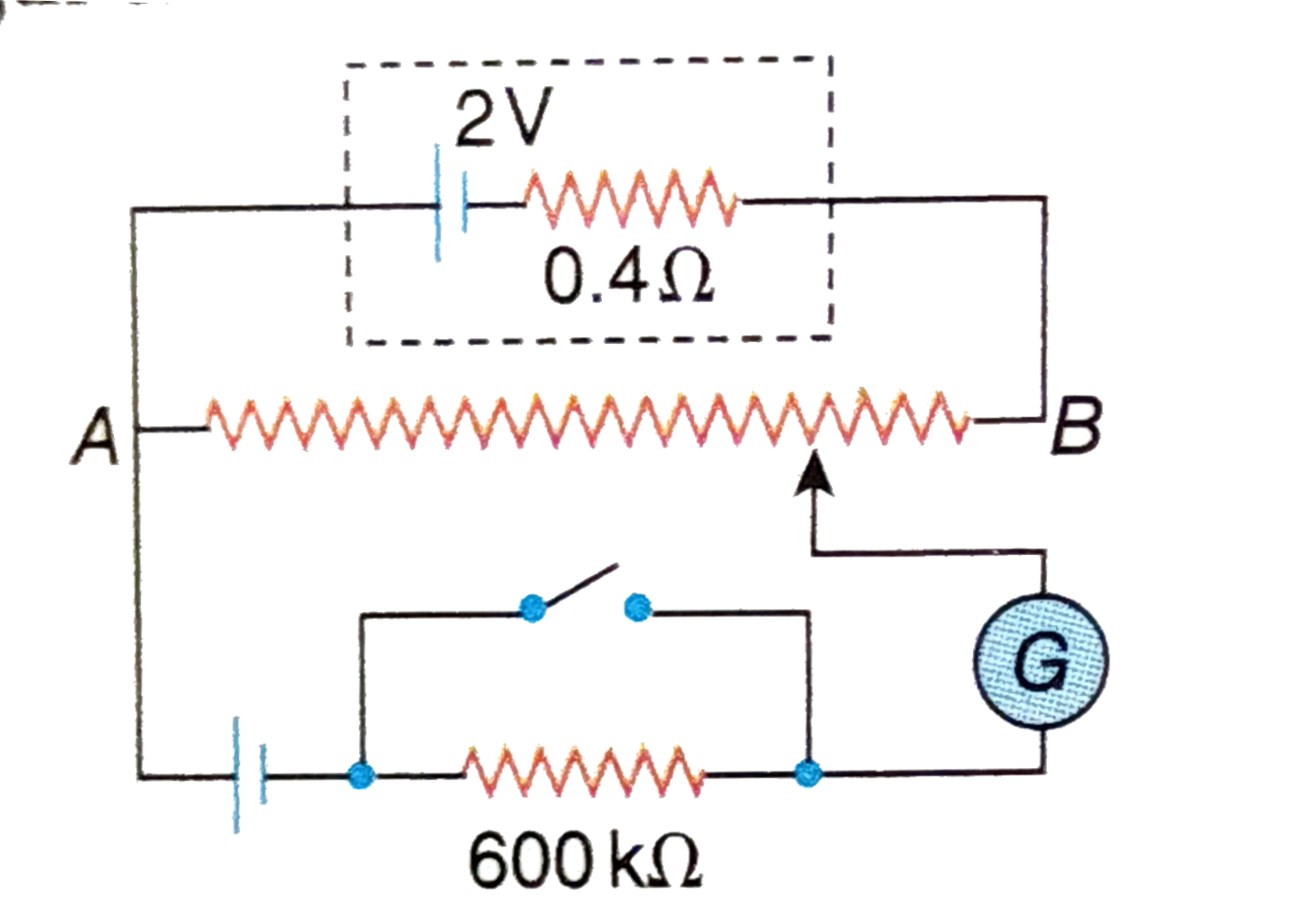
Is the balance ponit affected by the internal reistance of the driver cell ?View SolutionShows a potentiometer with a cell of 2.0 V and internal resiatance `0.40Omega` maintaining a potential drop across the reistor wire AB . A standard cell which maintain a constant emf of 1.02 V (for very moderate currents up to a few mA ) gives a balance point at 67.3 cm length of the wire . To ensure very low currents from the standard cell , a very high resistance of `600kOmega` is put in series with it , whcich is horrted close t the balance point . The standard cell is then replaced by a cell of unknown emf e and the balance ponit found similarly , turns out to to be at 82.3 cm length of the wire .
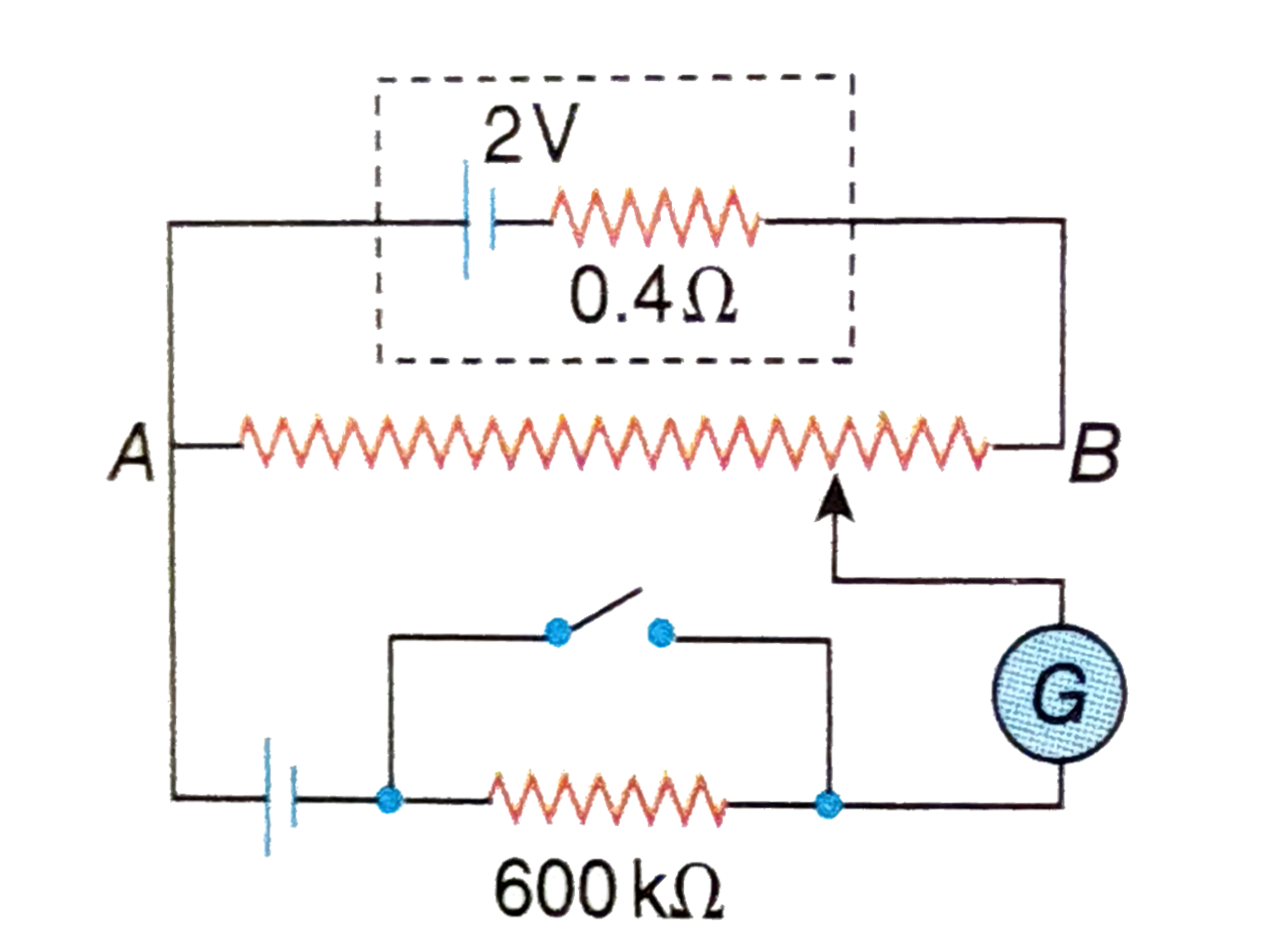
Would the method work in the above situation of the drive cell of the potentiometer had an emf of 1.0 V instead of 2.0 V ?View SolutionShows a potentiometer with a cell of 2.0 V and internal resiatance `0.40Omega` maintaining a potential drop across the reistor wire AB . A standard cell which maintain a constant emf of 1.02 V (for very moderate currents up to a few mA ) gives a balance point at 67.3 cm length of the wire . To ensure very low currents from the standard cell , a very high resistance of `600kOmega` is put in series with it , whcich is horrted close t the balance point . The standard cell is then replaced by a cell of unknown emf e and the balance ponit found similarly , turns out to to be at 82.3 cm length of the wire .
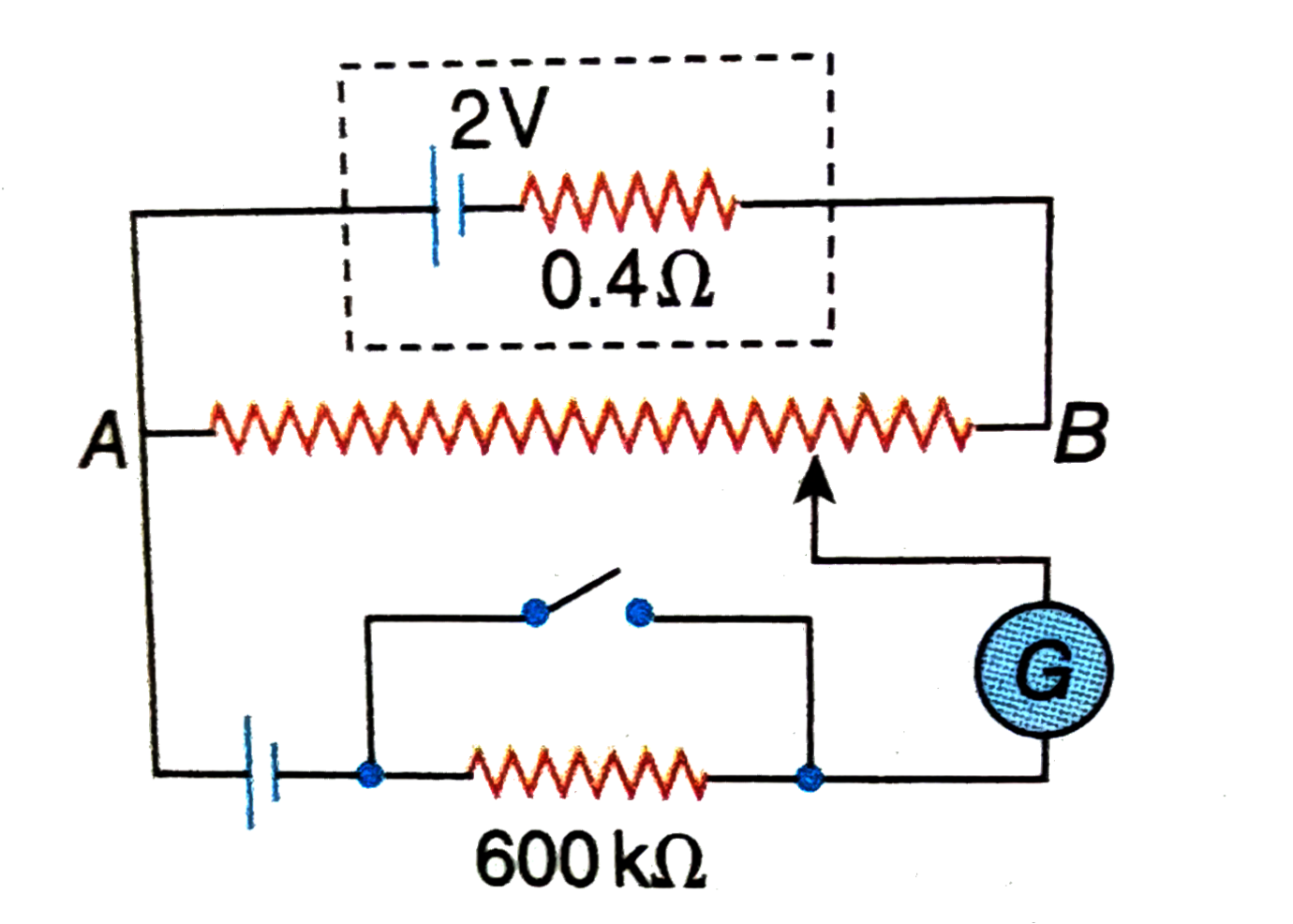
Would the circuit work well for determining an extremely small emf , say of the order of a few m V ? If not , how will you modify the circuit ?View SolutionTwo resistances are compared by a potentimeter . The balance ponit with a standard resistor `R=10.0Omega` is found to be 58.3 cm , why while the unknown resistance X is 68.5 cm .

(a) What is the value of X ?View SolutionTwo resistances are compared by a potentimeter . The balance ponit with a standard resistor `R=10.0Omega` is found to be 58.3 cm , why while the unknown resistance X is 68.5 cm .
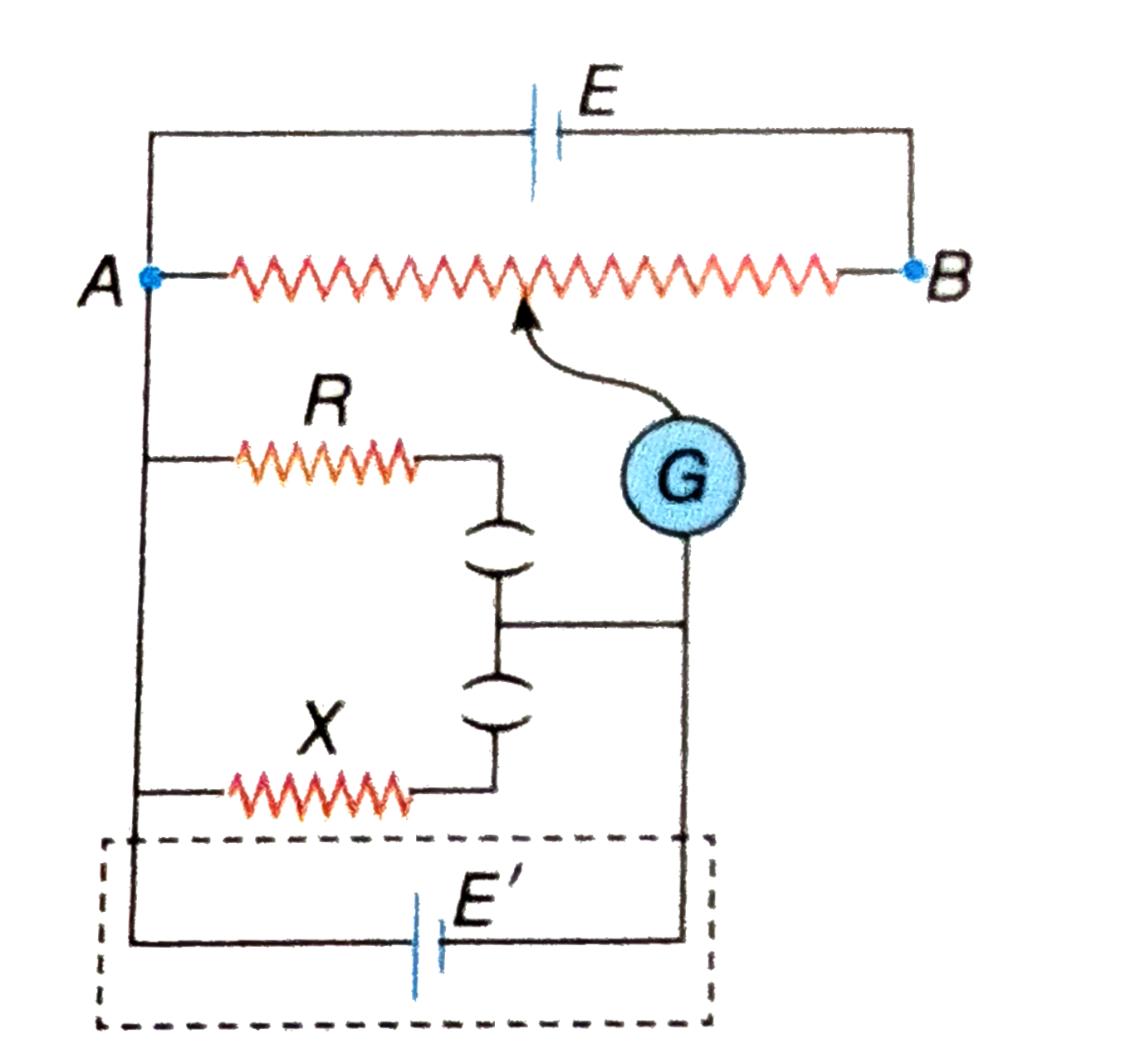
What would you do if no balance point is obtained using the given cell of emf E ?View SolutionShows 2.0 V potentiometer used fr the determination of internal resistance of a 1.5 V cell . The balance point of the cell in open circuit is 76.3 cm . When a resistor of `9.5Omega` is used in the external circuit of the ,the balance point shifts to 64.8 cm length of hte potentiometer wire . Determine the internal resistance of the cell .
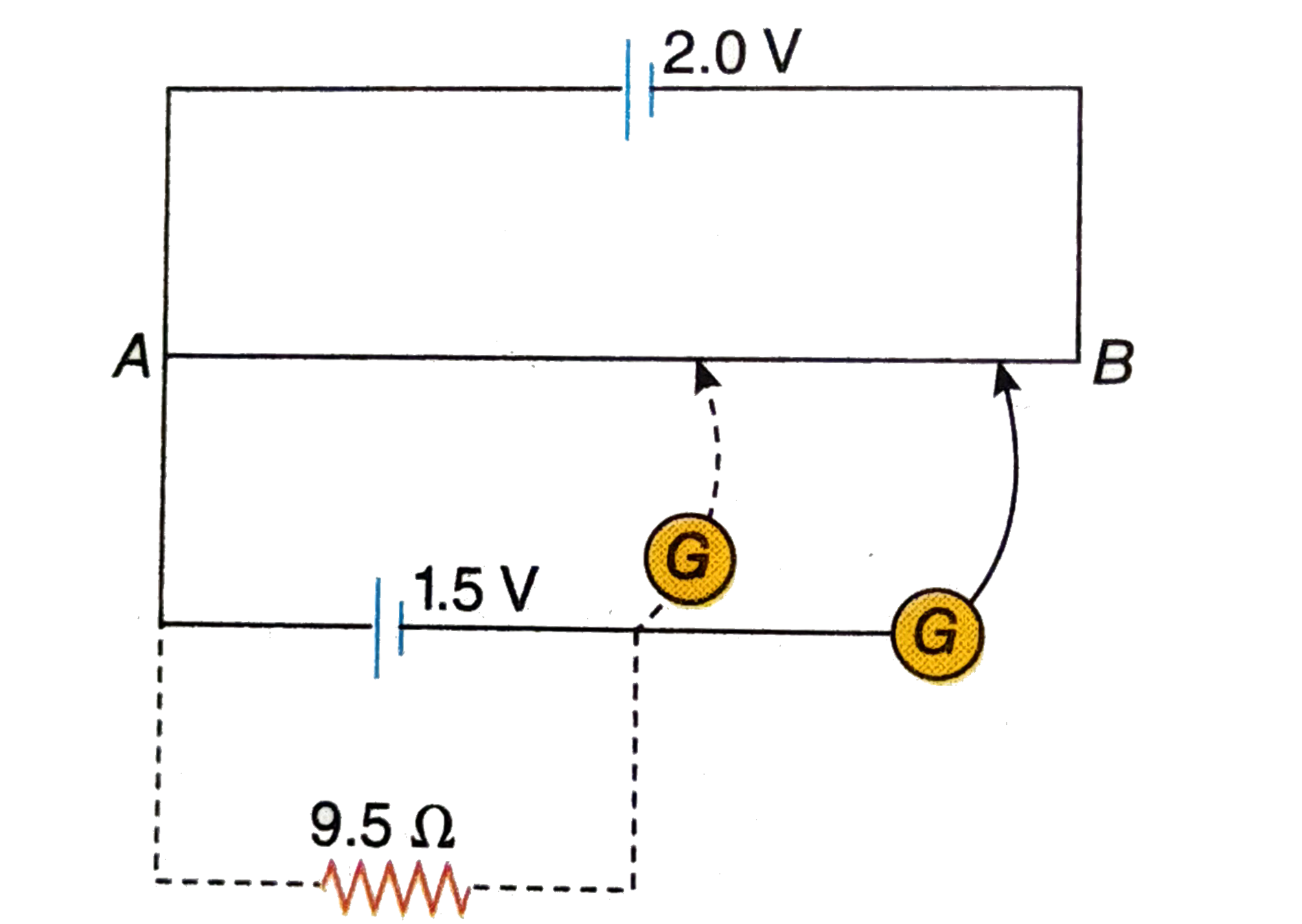 View Solution
View Solution
NCERT TEXTBOOK QUESTIONS WITH ANSWER HINT questions and complete solutions for chapter KIRCHHOFF'S LAWS AND ELECTRICAL MEASUREMENT of CHHAYA PHYSICS (BENGALI ENGLISH) of Class 12
All Exercises from CHHAYA PRAKASHINI Class 12 PHYSICS KIRCHHOFF'S LAWS AND ELECTRICAL MEASUREMENT
- CBSE SCANNER
- ENTRANCE CORNER (Assertion -reason type )
- ENTRANCE CORNER (Comprehension type)
- ENTRANCE CORNER (Integer answer type )
- ENTRANCE CORNER (Multiple correct answers type )
- EXAMINATION ARCHIVE (AIPMT )
- EXAMINATION ARCHIVE (JEE Main)
- EXAMINATION ARCHIVE (NEET)
- EXAMINATION ARCHIVE (WBCHSE )
- EXAMINATION ARCHIVE (WBJEE )
- EXERCISE ( Problem Set - I)
- EXERCISE ( Problem Set - II)
- EXERCISE ( Short Answer Type Questions - I )
- EXERCISE ( Short Answer Type Questions - II )
- EXERCISE (Multiple Choice questions )
- EXERCISE (Very Short Answer Type Questions )
- HIGHER ORDER THINKING SKILL (HOTS) QUESTIONS
- NCERT EXEMPLAR QUESTIONS WITH ANSWER HINT (MCQ -1)
- NCERT EXEMPLAR QUESTIONS WITH ANSWER HINT (MCQ -2)
- NCERT TEXTBOOK QUESTIONS WITH ANSWER HINT
- Numerical Examples
- Section Related Questions
